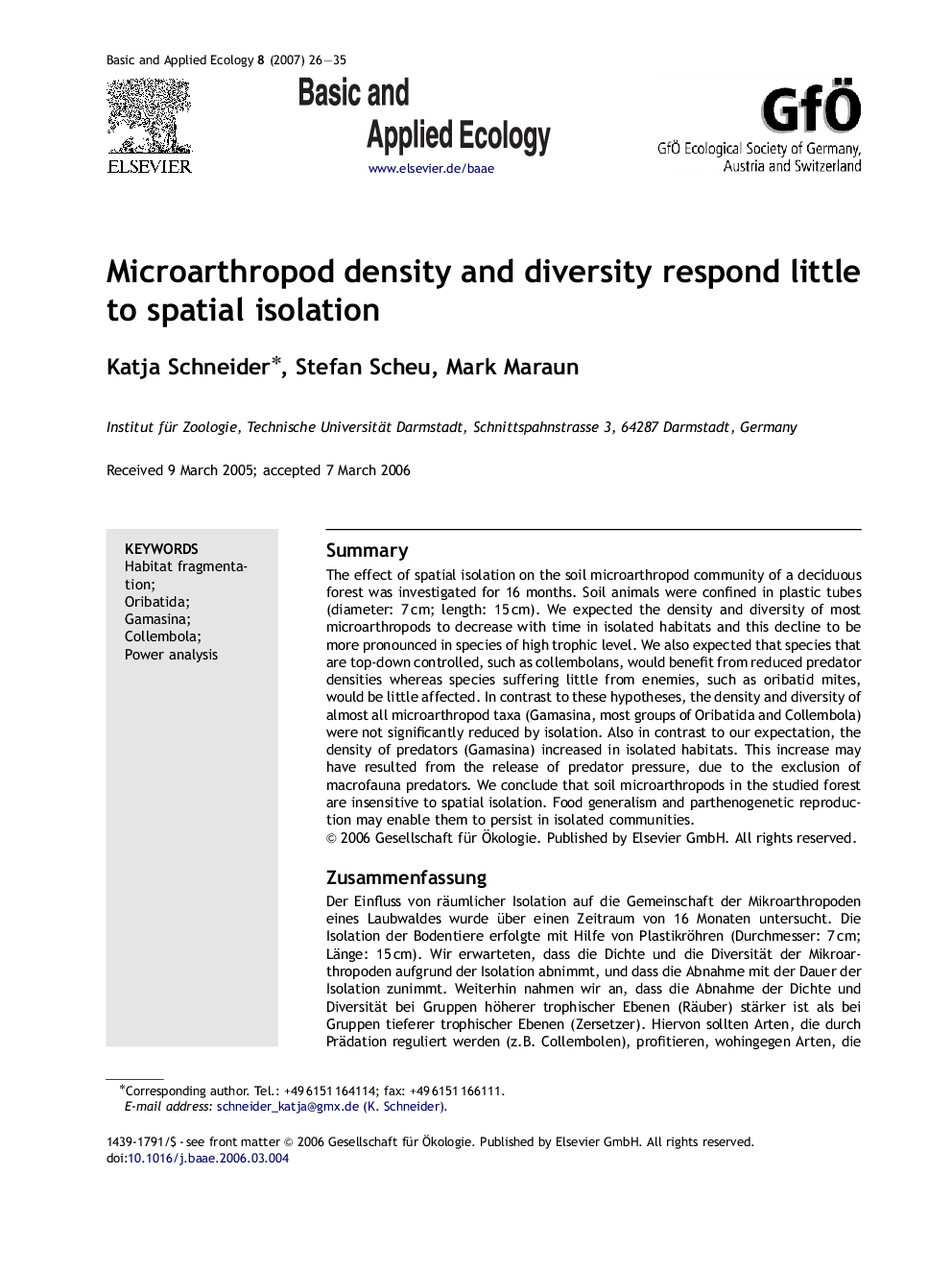| کد مقاله | کد نشریه | سال انتشار | مقاله انگلیسی | نسخه تمام متن |
|---|---|---|---|---|
| 4384993 | 1304461 | 2007 | 10 صفحه PDF | دانلود رایگان |

SummaryThe effect of spatial isolation on the soil microarthropod community of a deciduous forest was investigated for 16 months. Soil animals were confined in plastic tubes (diameter: 7 cm; length: 15 cm). We expected the density and diversity of most microarthropods to decrease with time in isolated habitats and this decline to be more pronounced in species of high trophic level. We also expected that species that are top-down controlled, such as collembolans, would benefit from reduced predator densities whereas species suffering little from enemies, such as oribatid mites, would be little affected. In contrast to these hypotheses, the density and diversity of almost all microarthropod taxa (Gamasina, most groups of Oribatida and Collembola) were not significantly reduced by isolation. Also in contrast to our expectation, the density of predators (Gamasina) increased in isolated habitats. This increase may have resulted from the release of predator pressure, due to the exclusion of macrofauna predators. We conclude that soil microarthropods in the studied forest are insensitive to spatial isolation. Food generalism and parthenogenetic reproduction may enable them to persist in isolated communities.
ZusammenfassungDer Einfluss von räumlicher Isolation auf die Gemeinschaft der Mikroarthropoden eines Laubwaldes wurde über einen Zeitraum von 16 Monaten untersucht. Die Isolation der Bodentiere erfolgte mit Hilfe von Plastikröhren (Durchmesser: 7 cm; Länge: 15 cm). Wir erwarteten, dass die Dichte und die Diversität der Mikroarthropoden aufgrund der Isolation abnimmt, und dass die Abnahme mit der Dauer der Isolation zunimmt. Weiterhin nahmen wir an, dass die Abnahme der Dichte und Diversität bei Gruppen höherer trophischer Ebenen (Räuber) stärker ist als bei Gruppen tieferer trophischer Ebenen (Zersetzer). Hiervon sollten Arten, die durch Prädation reguliert werden (z.B. Collembolen), profitieren, wohingegen Arten, die nur wenige Feinde haben (z.B. Oribatiden), unbeeinflusst bleiben sollten. Im Gegensatz zu unseren Hypothesen nahmen die Dichte und die Diversität der meisten Mikroarthropoden-Gruppen (Gamasina, fast alle Oribatiden- und Collembolen-Gruppen) durch Isolation nicht signifikant ab. Die Dichte der Räuber (Gamasina) stieg in den isolierten Habitaten sogar an. Dieser Anstieg war vermutlich auf den Ausschluss von Makrofauna-Prädatoren zurückzuführen. Die Ergebnisse deuten daraufhin, dass die Mikroarthropoden des untersuchten Waldes unempfindlich für Habitatisolierung sind. Generalistische Ernährung und parthenogenetische Reproduktion tragen möglicherweise dazu bei, dass Mikroarthropoden in isolierten Gemeinschaften überleben können.
Journal: Basic and Applied Ecology - Volume 8, Issue 1, 8 January 2007, Pages 26–35